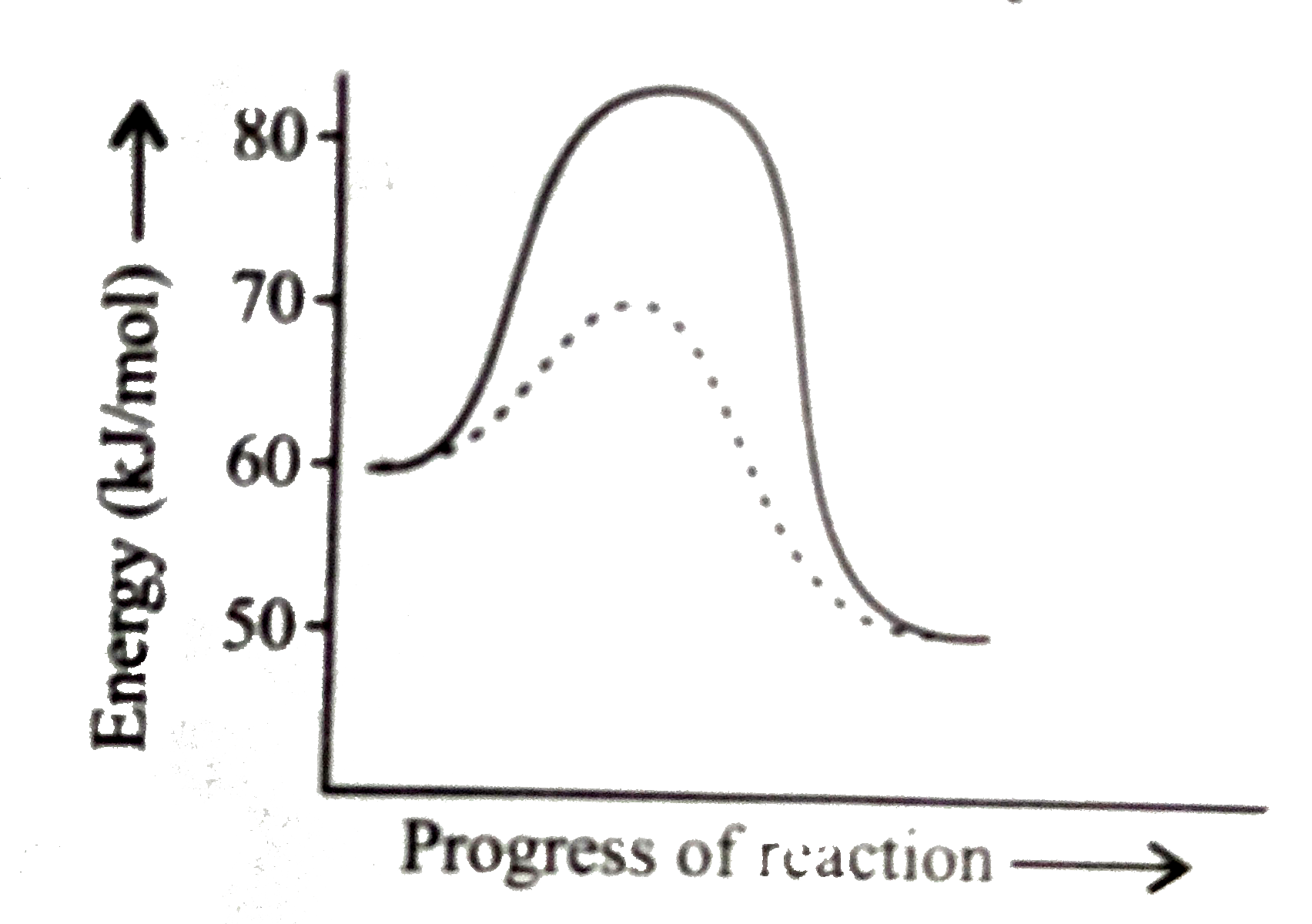R-Cl is hydrolysed to R-OH slowly but the reaction is rapid in presence of KI as catalyst. Explain.
KI supplies I− ion which is strong nucleophile and hence reacts rapidly with R-Cl to form R-I. I− is also a better leaving group than Cl−. Hence R-I is hydrolysed rapidly to form R-OH and I. I ion is again used in converting R-Cl to R-I.
R−Cl+H2Oslow−−→R−OH+Cl
R−Cl+I−fast−−→−ClR−I+H2O−−−→FastR−OH
Similar Questions
Tischenko reaction yields ester in the presence of catalyst which is :
View SolutionGive balanced equation for the reaction : Ammonua & oxygen in the presence of a catalyst.
View SolutionFor a reaction A2+B2⇔2AB the figure shows the path of the reaction in absence and presence of a catalyst. What will be energy of activation for forward (Ef) and backward (Eb) reaction in presence of a catalyst and ΔH for the reaction? The dotted curve is path of reaction in presence of a catalyst.
 View Solution
View SolutionWrite the equation for the reaction between ammonia and oxygen in the presence of a catalyst.
View SolutionThe activation energy of a reaction is 75.2 kJ mol−1 in the absence of a catalyst and 50.14 kJ mol−1 with a catalyst. How many times will the rate of reaction grow in the presence of the catalyst if the reaction proceeds at 25∘C?[R=8.314JK−1 mole1 ]
View SolutionThe activation energy of a reaction is 75.2 kJ mol−1 in the absence of a catalyst and 50.14 kJ mol−1 with a catalyst. How many times will the rate of reaction grow in the presence of the catalyst if the reaction proceeds at 25∘C?[R=8.314JK−1 mole1 ]
View SolutionThe activation energy of a reaction is 75.2 kJ mol−1 in the absence of a catalyst and 50.14 kJ mol−1 with a catalyst. How many times will the rate of reaction grow in the presence of the catalyst if the reaction proceeds at 25∘C?[R=8.314JK−1 mole1 ]
View SolutionWhy equilibrium constant of a reaction does not change in the presence of a catalyst ?
View SolutionThe activation energy for a first order reaction is 60 kJ mol−1 in the absence of a catalyst and 50 kJ mol−1 in the presence of a catalyst. How many times will the rate of reaction grow in the presence of the catalyst if the reaction proceeds at 27∘C ?
View SolutionThe activation energy for a first order reaction is 60 kJ mol−1 in the absence of a catalyst and 50 kJ mol−1 in the presence of a catalyst. How many times will the rate of reaction grow in the presence of the catalyst if the reaction proceeds at 27∘C ?
View Solution

